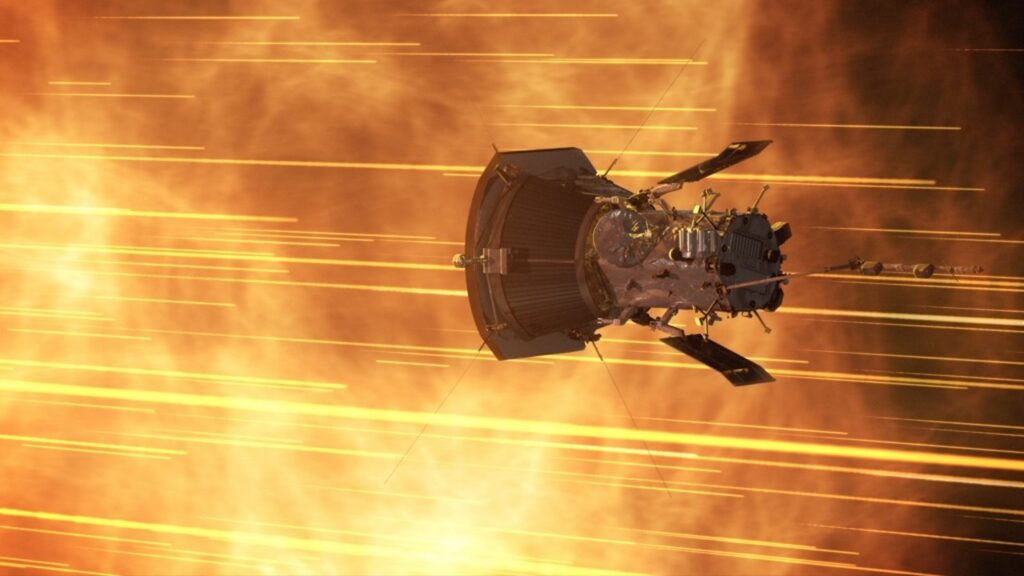On September 27, the Parker Solar Probe (PSP) passed the perihelion of its orbit for the 17th time. During this maneuver, the spacecraft updated the speed records and the minimum distance to the solar surface.

PSP was launched in 2018. It is designed to study the upper layer of the solar atmosphere, called the corona, and the processes occurring in it. NASA specialists built the probe’s orbit in such a way that during the passage of the perihelion, the probe would “dive” inside the corona, after which it transmitted information to Earth.
In the process of completing its mission, the PSP gradually reduces its distance to the Sun. This is achieved by performing a series of gravitational maneuvers near Venus. They allow it to reduce the perihelion of the probe’s orbit.
The last such maneuver took place in August 2023, when the PSP flew at a distance of 3,900 km from Venus. This maneuver made it possible to reduce the perihelion of the spacecraft to only 7.26 million km. For comparison, Mercury never gets closer to the Sun than 46 million km. When the probe passed near the star on September 27, its speed was 176.5 km/s relative to the Sun, which also became a new record for space technology.
PSP has successfully experienced a record convergence and confirmed that all its systems are operating normally. The retransmission of all collected data will begin after the automatic scout moves away from the Sun to a safe distance.
It is worth noting that this is not the last record of the mission. In November 2024, the PSP will perform the final gravity maneuver at Venus. It will put the probe into the final orbit, which perihelion will pass at a distance of only 6.2 million km from the surface of the Sun.
According to https://blogs.nasa.gov
Follow us on Twitter to get the most interesting space news in time
https://twitter.com/ust_magazine
